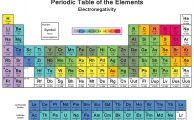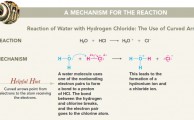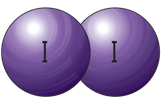
Electronegativity and Electronegativity Chart in PDF
Here you can learn about Electronegativity of the Elements and can also download Electronegativity chart in pdf for free. We use a quantity called electronegativity to estimate whether a given bond is nonpolar covalent, polar covalent, or ionic. Electronegativity is defined as the ability of an atom in a molecule to attract electrons to itself. […]

Homolysis and Heterolysis of Covalent Bonds
Reactions of organic compounds always involve the making and breaking of covalent bonds. A covalent bond may break in two fundamentally different ways. Heterolysis When a bond breaks such that one fragment takes away both electrons of the bond, leaving the other fragment with an empty orbital, this kind of cleavage is called heterolysis (Greek: […]

How to Use Curved Arrows in Illustrating Reactions
Curved Arrows show the direction of electron flow in a reaction mechanism. point from the source of an electron pair to the atom receiving the pair. (Curved arrows can also show the movement of single electrons. We shall discuss reactions of this type in a later chapter.) always show the flow of electrons from a […]

The Mole (Lecture 1)
Atoms are very small and numerous to be counted one at a time. Instead the quantity of atoms is measured by mass. The unit of measurement for atoms and molecules is the mole. The mole is also the S.I unit for chemical quantity. The symbol for the mole is mol. A mole of a substance […]